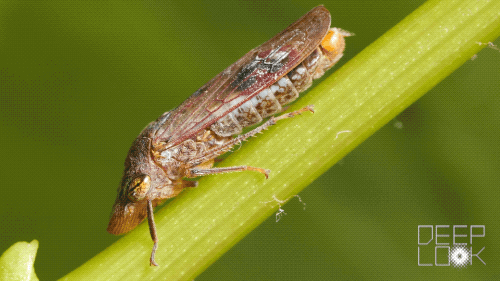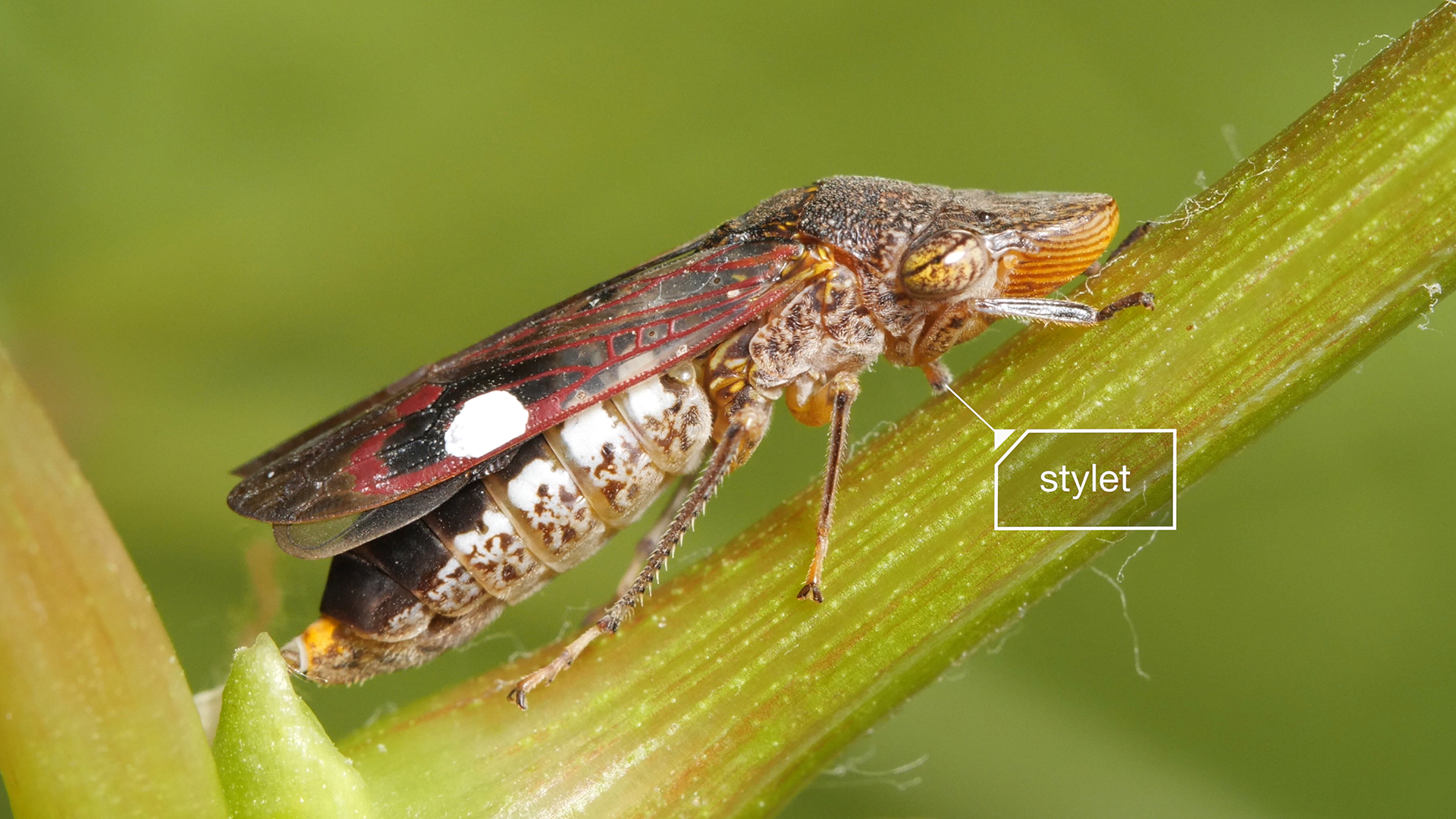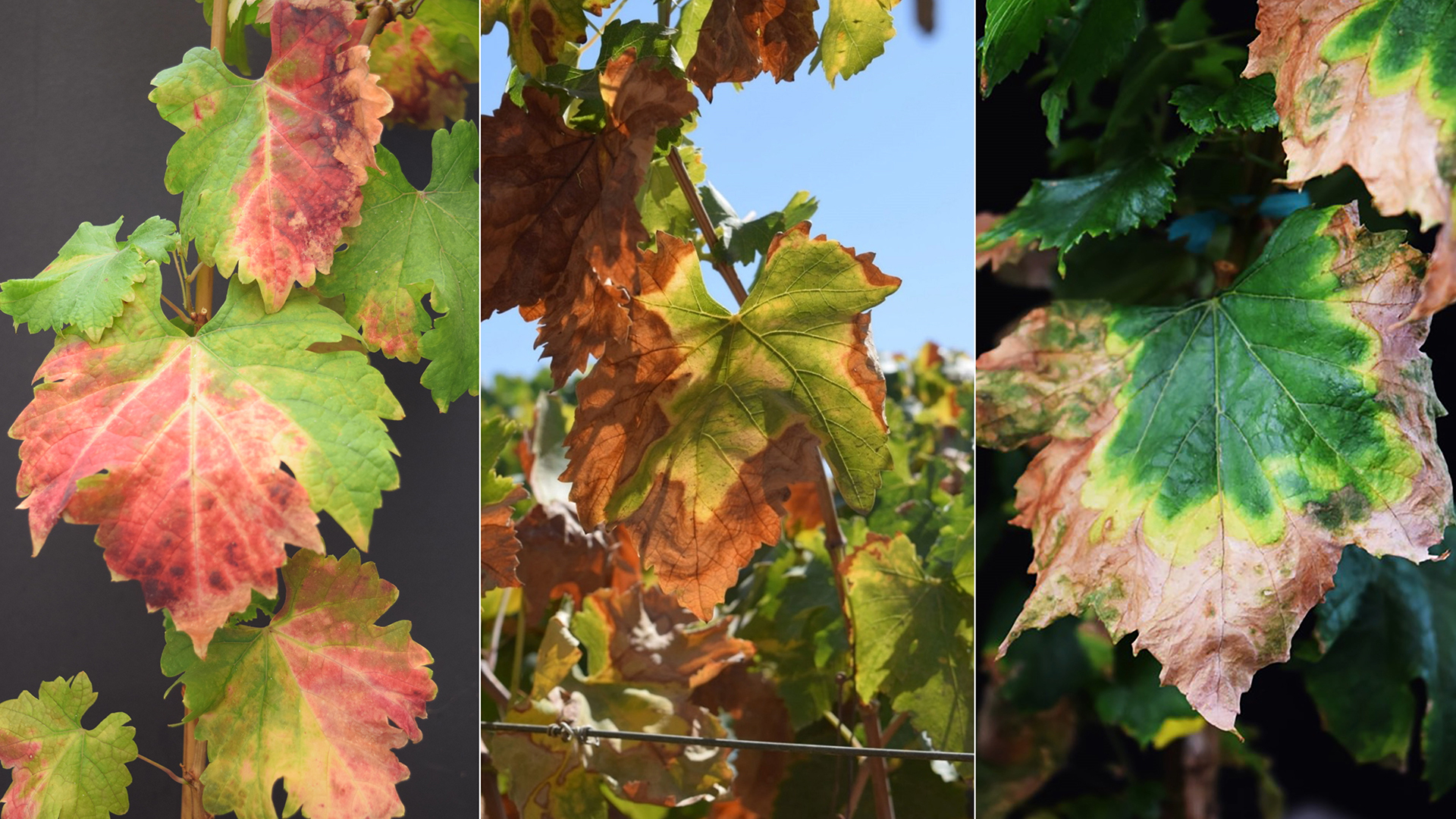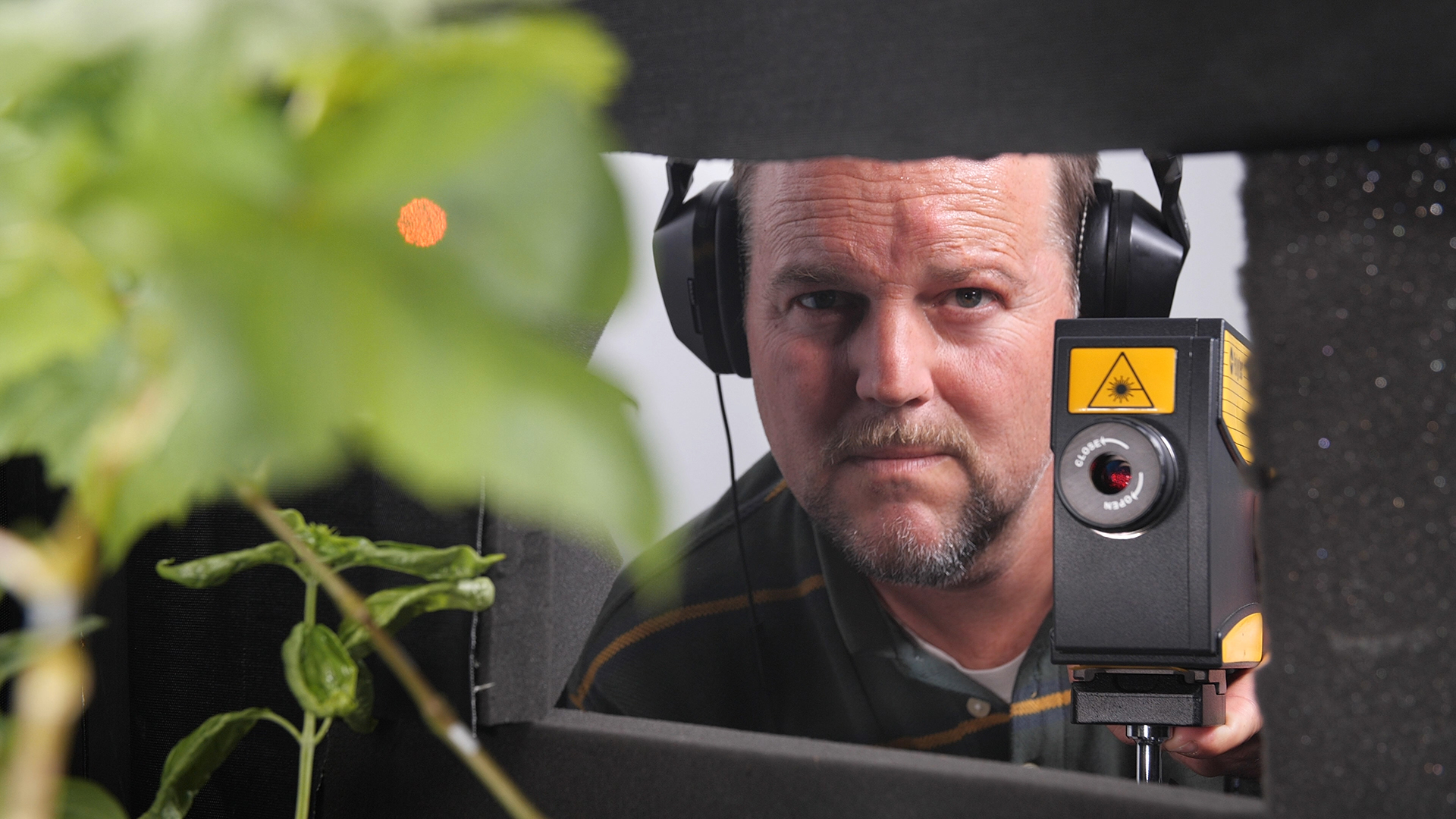Sharpshooter Insects’ Sexy Vibrations Spell Trouble in the Vineyard
Entomologist Rodrigo Krugner has spent days on end listening to insects’ intimate conversations. This esoteric and painstaking bit of spy work is for a good cause: protecting your glass of California wine and bunch of table grapes.
Krugner studies the mating calls of sap-sucking insects called sharpshooters at the U.S. Department of Agriculture’s research facility in Parlier, near Fresno. As it turns out, the insects’ pillow talk is pretty entertaining.
“They have harmonics and some are beautiful,” Krugner said. “Some sound like a baby crying, some sound like a motorcycle.”

Sharpshooters make a living hopping around plants like grapevines and feeding on their sap. They dig their mouthpart into a grapevine’s xylem, the tissue that carries up water and small amounts of sugars and minerals from the roots and distributes this sap throughout the plant. To get enough of the nutritious stuff, some sharpshooters drink up to 300 times their bodyweight each day. They shoot out the excess liquid, known as “insect honeydew,” from their rear ends — folks standing near a grapevine might feel a refreshing mist.

The problem for grape growers is that while sharpshooters stuff themselves, they inject a bacterium called Xylella fastidiosa into grapevines, which makes their leaves turn yellow and eventually kills them.
“The complete details aren’t sorted out,” said UC Berkeley plant pathologist Rodrigo Almeida, “but it kills the plant sort of by dehydration.”
Known as Pierce’s disease, this infection costs California more than $100 million each year in lost grapevines and efforts to combat it, according to a 2014 report. In Napa and Sonoma valleys and along the coast, the most recent outbreak of Pierce’s disease — which started in 2013 and is just starting to wane — caused some vineyards to lose 50% to 60% of their grapevines, said Monica Cooper, a University of California farm adviser based in Napa.

Different types of sharpshooters transmit Pierce’s disease in different parts of the state. In Napa and Sonoma and on the coast, the native blue-green sharpshooter is the main culprit. In Southern California and the San Joaquin Valley, the invasive glassy-winged sharpshooter — a larger red and brown insect — spreads the disease.

To keep down sharpshooter populations, growers spray vines with pesticides or with a clay that discourages the insects from feeding and laying eggs. When spraying insecticides isn’t possible, such as in residential areas and on organic farms, a tiny insect is released that lays its eggs inside the sharpshooters’ eggs and kills them. And because blue-green sharpshooters spend the winter feeding on vegetation along rivers and creeks, pulling out invasive plants like the Himalayan blackberry along the Napa River has also helped keep their populations down, Cooper said.
Krugner has been researching a different approach. He has found a way to turn sharpshooters’ sexual habits against them to dissuade them from reproducing.
Sharpshooters vibrate their abdominal muscles to call out to potential mates on grapevines.

While other insects, such as cicadas, have air sacs that help them communicate, sharpshooters use their entire bodies as noisemakers.
“Insects aren’t one solid piece,” Krugner said. “The source of the signal is the muscles. Once they vibrate the muscles, the exoskeleton moves. Every tiny bit moves.”
The sharpshooters’ vibrations travel down to the roots and from one vine to another.
Normally, humans can’t hear any of these shenanigans. But Krugner can point a laser beam at a grapevine where sharpshooters are calling out and amplify their vibrations using a computer.

When he plays back the vibrations as sound waves, a raucous concert comes alive. Blue-green sharpshooters’ calls sound like howling monkeys or clucking chickens. Glassy-winged sharpshooters make a sound more like revving engines.
Male and female sharpshooters first call out to identify a potential mate of their same species. Once a related male and female are on the same plant, they play a version of the Marco Polo game to find each other — that’s how they make up for the fact that they don’t see very well. When they’re finally near each other, they perform a courtship call, then join their rear ends and copulate for two to four hours, depending on the species.
Krugner observed that if several female sharpshooters were seeking a mate, one of them would sing longer and stronger and establish herself as the dominant female. All the other females quieted down and only the dominant one mated with the male. He saw the potential to use this information to halt reproduction in the grapevine by confusing insects out searching for action. He played back a recording of a dominant female’s call throughout vineyard rows by vibrating a metallic electromagnetic shaker he hung from a trellis. This made the grapevines vibrate and broadcast the fake female’s call to the insects.
“I thought ‘I’m going to be the dominant female out there. That way I can just shut up all the real ones on the vine,’” Krugner said. “And sure enough, that’s what happened.”
The males ignored the real female sharpshooters on the grapevine and ended up not mating at all.

Krugner’s mating-disruption electromagnetic shaker, which he developed using glassy-winged sharpshooters as his model, is still in the prototype phase and hasn’t been adopted by growers yet. But he sees a lot of potential. His idea is to make it possible for a grower to play back the calls of several different pests they want to control.
“It would be like iTunes,” he said.
In addition to studying sharpshooters and a related pest, the variegated leafhopper, Krugner is also investigating the vibrations that black widow spiders make on their spider webs to keep other black widows away. These arachnids can live on table grapes and be mistakenly packed in with the fruit when it’s harvested into plastic bags.
“There’s a number of other pests of grapevines that use vibrational communication, and if I’m using my shakers out there, why not hit them all?” Krugner said. “But to hit them, you need to know what they’re saying to each other.”
And so his spying continues.